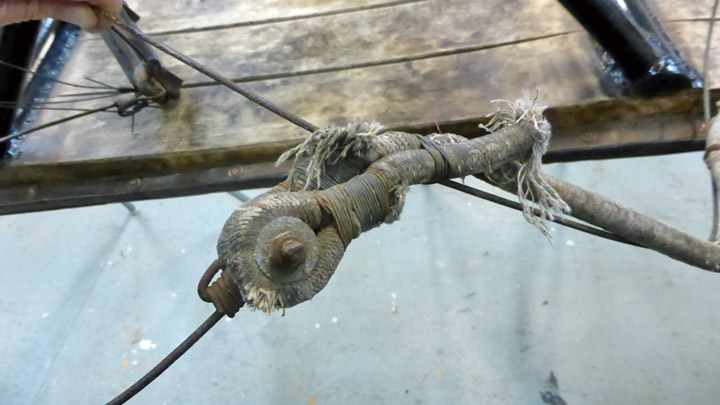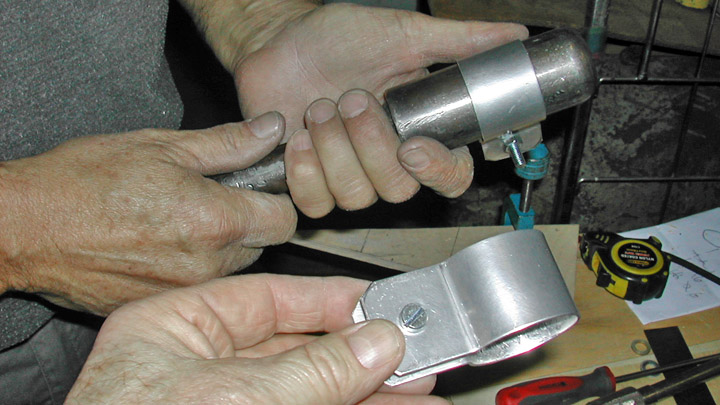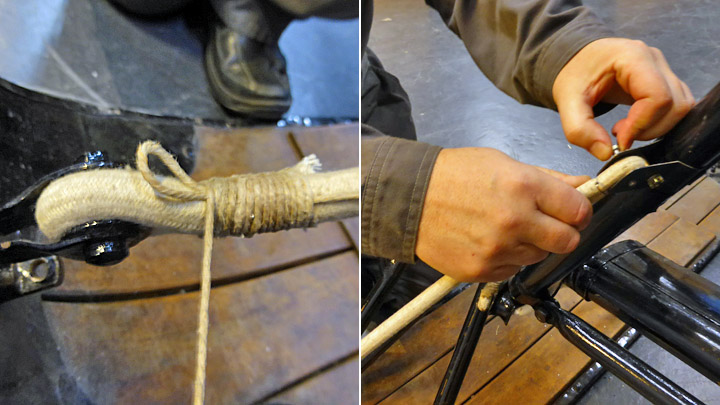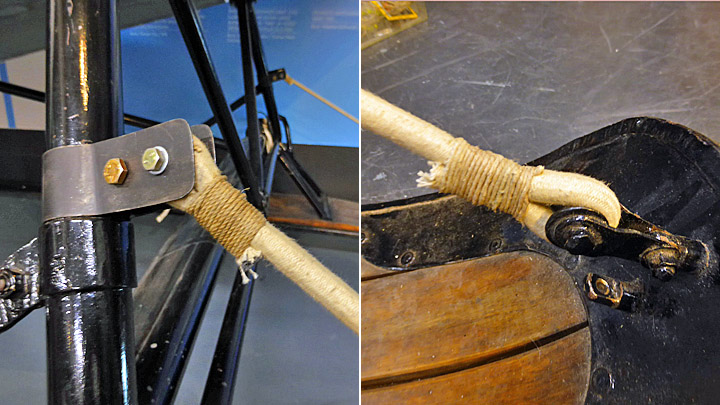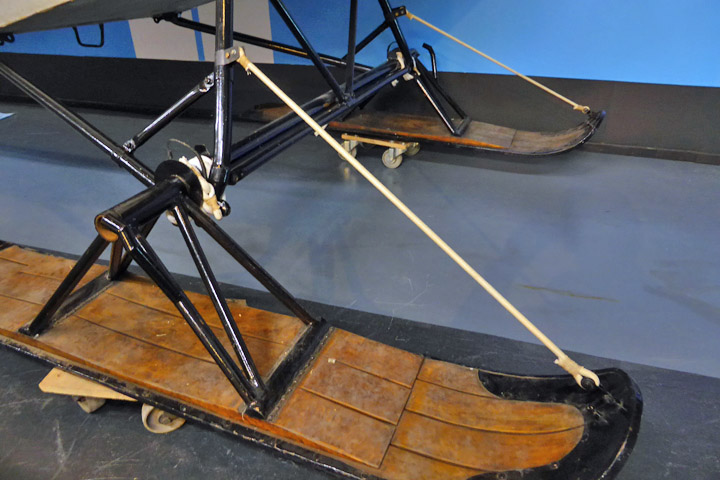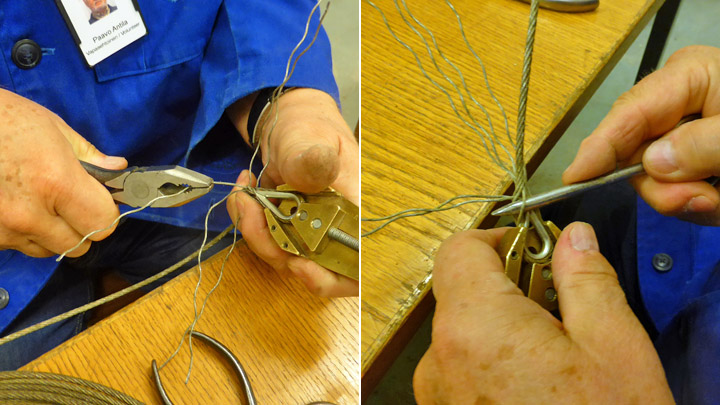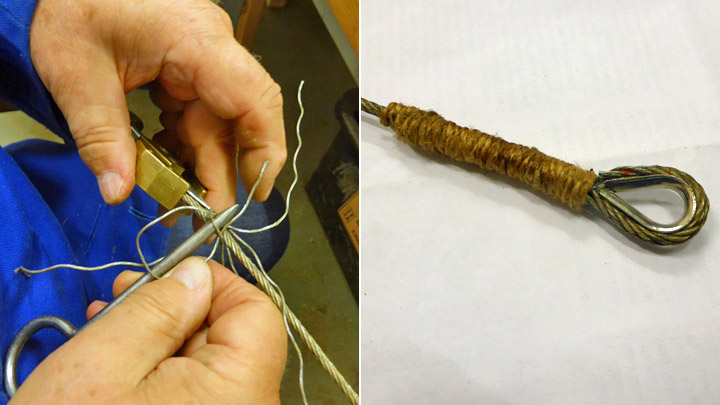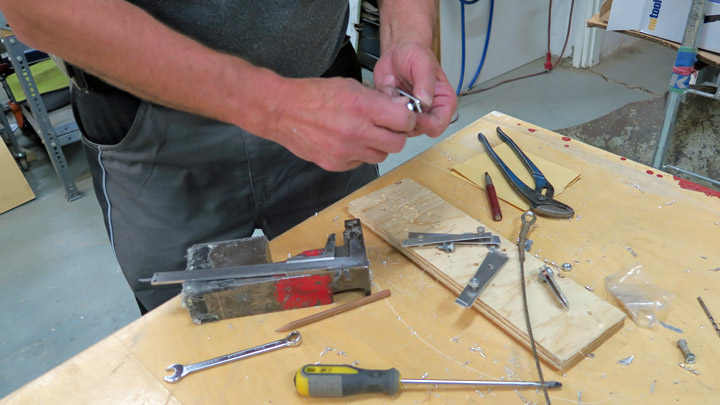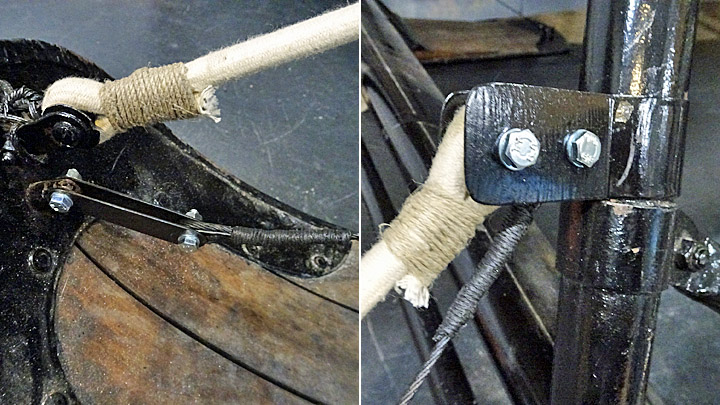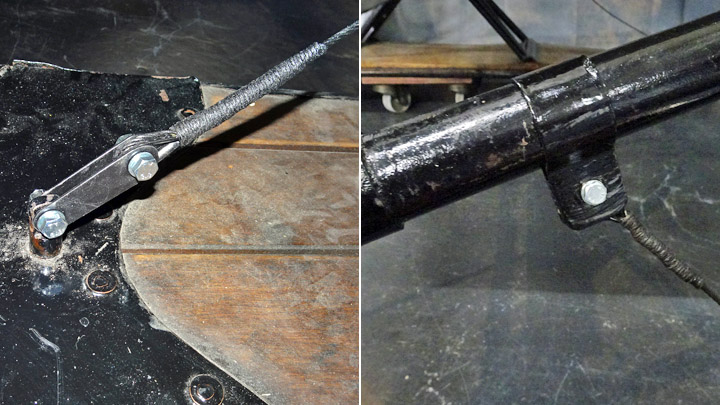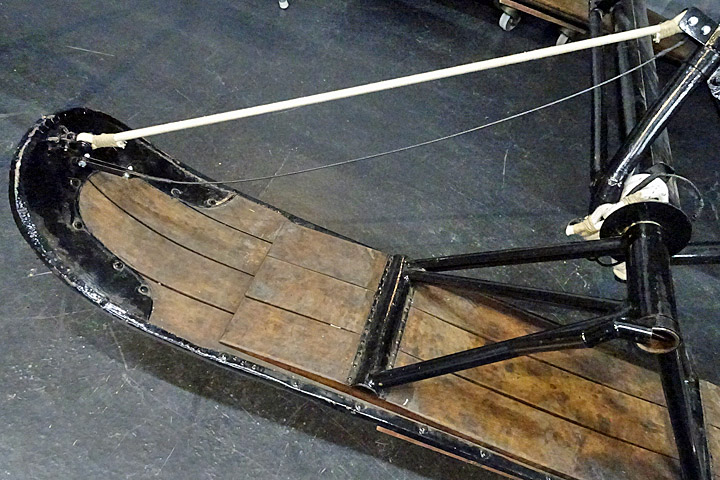Sandums and safety wires on Kurki skisSunnuntai 26.11.2017 - Member of Tuesday Club The skis of an aircraft are kept in a proper position by flexible rubber ropes (sandums) and restricting safety cables which are connected to the tips of the skis and to the landing gear frame. When the plane is taxing, the sandums flex according to the movement of the skis and when the plane is in the air they keep the skis in an angled position with the ski tips pointing slightly upwards. The safety cables make sure that the skis remain in the correct flying position even if the rubber rope breaks. Without the restricting cables the skis would move uncontrollably, making it impossible to land safely. There is a cable from the tip and from the heel of each ski, connecting to the landing gear or the fuselage of the plane. Steel wire has also been used instead of cables. The I.V.L.K.1 Kurki, which is being renovated by the Tuesday Club of the Finnish Aviation Museum, had skis with some traces of old sandums and safety wires still left. The sandums were rubber rope, about 2 cm thick and the safety wires were steel wire, 5 mm thick. However, judging by the old photographs taken of Kurki, it is quite certain that the present skis have not originally belonged to Kurki. The skis have been made according to the State Aircraft Factory standards and might well have been under the Kurki, but the existing sandums and safety wires don’t match with the old photographs taken of Kurki. The Tuesday Club decided to install sandums and safety wires which match the ones on the old Kurki photographs. The remains of the existing sandums and safety wires were removed. There was still one more difficulty to overcome: there are differences in the old photographs showing how the sandums and safety wires are connected. The Club members decided to follow the installation principle shown on the photographs taken of Kurki in early spring in 1927.
The installation of the sandums was started by lifting up the Kurki tail, allowing the skis to hang in the flying position. The correct length of the sandums keeps the skis in the appropriate angled position when the rubber rope is tight. The rubber rope is flexible when the plane is on the ground or in a taxing position on its tail wheel.
Before the sandums and safety wires could be installed, the fastening brackets had to be made on the landing gear. There were no brackets left on the landing gear to hold the upper ends of the rubber ropes and safety wires. This may be because on its last flights Kurki had float gear which don’t need sandums or safety wires. According to the old photograph, the sandums and safety wires on Kurki are installed so that the sandum and safety wire from the tip of the ski are attached to the same fastening bracket on the landing gear frame. The safety wire from the heel of the ski is attached to its own bracket on the landing gear. The missing brackets were made of aluminium plate, painted black and attached to the landing gear frame.
A piece of appropriate rubber rope was found at the Finnish Aviation Museum to make the sandums. The rope was cut to measure and the end of the sandum rope was passed through the block wheel on the tip of the right side ski and bent into a loop. The loop was locked at its base, using first thin steel wire and then flax yarn to make the actual locking weave. The yarn was spun around the base of the loop into a tight braid.
A similar loop was made at the upper end of the sandum and the loop was connected to the bracket on the landing gear using a bolt. Now the right ski had its sandum in place. Using the same method the sandum on the left ski was installed.
Suitable 3.7 mm thick wire to make the safety wires was found at the Finnish Aviation Museum. The length of the wire was measured from the fastening points on the skis to the brackets on the landing gear frame. The length of the wire has to allow the ski to move when the plane is taxing and to restrict the movement of the ski in case the sandum breaks. About 10 cm was added to the measured wire length to allow a fastening loop to be made at each end of the wire.
Modern schackles couldn’t be used when making the wire loops. The original Kurki wire loops were made by splicing the wire. This means that the ends of the wire threads are braided into the wire itself.
The fastening loops were made with the help of a metal chute loop which supported the wire. The loop was attached on a splicing jig and the jig keeps the loop firmly on place when the wire is being spliced. Using a splicing tool the threads of the wire were opened before the loop and the open ends of the wire threads were braided between the wire threads. Thread by thread the end of the wire was braided firmly into the wire. The spliced section was covered using flax yarn. Varnish was applied onto the spliced section covered with yarn to make the surface water resistant. All four connecting loops of the safety wire were prepared in the same way. When the loops were ready, all wires were painted using black Isotrol-varnish to protect the wires from corrosion.
The tips and heels of the skis had the original bayonets still in place for attaching the safety wires. However, the fastening brackets for the safety wire loops were missing. The brackets were made from aluminium plate, painted black and attached with bolts on either side of the bayonets. The lower ends of the spliced wire loops were placed between the brackets and locked with bolts. A thin copper tube was used as a sleeve on the bolts to prevent the wire loop from moving loosely on the bolt.
The upper ends of the front wires were attached to fastening bracket on the landing gear frame where the sandums already were in place. Bolts with copper sleeves were used. The upper ends of the rear wires were attached to their own brackets on the landing gear frame.
The safety wires were attached using modern 6 mm hexagonal bolts. The Kurki skis still have the original block wheels for the sandums with slot head bolts.
In fact all original bolts on Kurki are of the same type. This is why all the new bolts on the sandums and safety wires will be replaced later with slot head bolts. This kind of bolts are not available in hardware stores any more but hopefully some will be found in a special store. If not, the Tuesday Club members will modify them from standard modern bolts. |
|
Avainsanat: aviation history, restoring, old aircraft, I.V.L. K.1 Kurki |


